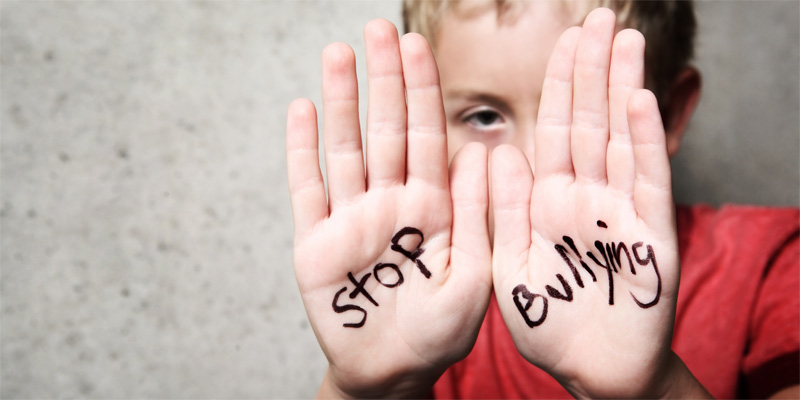This page contains resources and information for students and families about bullying. Please note: Bullying is a local control issue directly within the purview of the school district or charter school. After exploring the resources below, students, parents, and families are asked to work directly with the teacher, counselor, school leader, and school board. Students, parents, and families may also consider reviewing their school or district policy regarding bullying.
Bullying Prevention: Providing Safe Schools for All Students
The Safe Schools for All Students Act, passed during the 2019 New Mexico Legislature, repealed and replaced § 22-2-21 NMSA 1978 and created § 22-35 NMSA. New Mexico Administrative Code (NMAC) 6.12.7 was amended in response to this new law. By January 1 ,2020 each school board or governing body shall adopt bullying prevention policies that reflect these changes. The Safe Schools for All Students Policy Framework has been created to assist in that process. Please see the Safe Schools for All Students Policy Framework here.
What is Bullying?
“Bullying” means any repeated and pervasive written, verbal or electronic expression, physical act or gesture, or a pattern thereof, that is intended to cause distress upon one or more students in the school, on school grounds, in school vehicles, at a designated bus stop, or at school activities or sanctioned events. Bullying includes, but is not limited to, hazing, harassment, intimidation or menacing acts of a student which may, but need not be based on the student’s race, color, sex, ethnicity, national origin, religion, disability, age or sexual orientation. NMAC 6.12.7.7
Learn more about bullying prevention at the national level.
Cyberbullying
Cyberbullying happens when kids bully each other through electronic technology. Find out why cyberbullying is different from traditional bullying, what you can do to prevent it, and how you can report it when it happens.
Cyberbullying for Teens Information from Teens Health from Nemours
Managing the Effects of Social Media on Teen Girls
Before they shower, brush their teeth, and eat breakfast, many teen girls start their mornings by reaching for their phones. On the way to school, they might scroll Instagram posts from classmates, share videos from their favorite TikTok creators, or respond to late-night texts from a group chat with their best friends.
These may seem like trivial interactions—although adults are guilty of their own digital obsessions—but for many teen girls, social media platforms have significant effects on their mental and emotional health.
Who is at Risk?
Bullying can happen anywhere, but depending on the environment, some groups may be at an increased risk. Learn what factors increase the risk of children being bullied or children more likely to bully others and what warning signs can indicate that bullying may be happening. You can also find out how bullying can negatively impact kids.
Learn more about who is at risk.
Prevent Bullying
Parents, school staff, and other adults in the community can help kids prevent bullying by talking about it, building a safe school environment, and creating a community-wide bullying prevention strategy. Find out what you can do:
The New Mexico Office of the Attorney General offers community outreach presentations and trainings that educate, inform and support schools, students and New Mexico families on Cyber bullying and internet safety. These interactive presentations for students help them to learn proper ways of using the internet as a tool versus causing harm to themselves or others and supports positive digital citizenship in schools. Future school presentations for pre-k through 12th grade may be requested online through the New Mexico Office of the Attorney General website at https://www.nmag.gov/resources/community-safety-awareness/
Drug Abuse and Bullying: Everything You Need to Know
The Relationship Between Bullying and Substance Abuse
Olweus Bullying Prevention Program
Centers for Disease Control and Prevention CDC Resources
The Great Bully Roundup “Bullies aren’t all big and muscle-y. Bullies come in all shapes and sizes — and it’s not like you can tell who they are by what they look like. You can only tell a bully by their  actions — they make themselves feel powerful by threatening, embarrassing, or hurting others. If you have ever been around a bully or been picked on by a bully, you know how hurtful they can be. But, there are things you can do to stay out of a bully’s way.”
actions — they make themselves feel powerful by threatening, embarrassing, or hurting others. If you have ever been around a bully or been picked on by a bully, you know how hurtful they can be. But, there are things you can do to stay out of a bully’s way.”
Respond to Bullying
How you respond can make an impact on bullying over time. Find out what you can do to stop it on the spot and support the kids involved.
Get Help Now
If you have done everything you can to resolve the situation and nothing has worked, or someone is in immediate danger, there are ways to get help.
Learn more about getting help…
USA National Suicide Prevention Hotline
24/7, Free & Confidential
1-800-273-Talk
www.suicidepreventionlifeline.org
Hopeline
1-800-SUICIDE
www.hopeline.com
Crisis Chat
Online Emotional Support
www.crisischat.com
The Trevor Project
24/7 Suicide Hotline for GLBTQI Youth
1-866-4-U-Trevor
www.thetrevorproject.org
What is New Mexico doing to stop bullying?
New Mexico Public School Law requires the Public Education Department to establish policies and every local school district and state chartered school to implement bullying prevention programs.
Safe Schools for All Students Chapter 181 Senate Bill 288, 2019
The department shall establish guidelines for bullying prevention policies to be promulgated by local school boards. Every local school board shall promulgate a bullying prevention policy by August 2011. Every public school shall implement a bullying prevention program by August 2012
Resources
I Am A Witness Anti-Cyberbullying Campaign
United States Department of Education Office for Civil Rights Letter
Bullying Prevention Assurance
10 Questions Parents Can Ask to Ensure a Bully-Free School
Center for Disease Control and Prevention, School Violence: Prevention Tools and Resources
Bullying, Harassment, & Civil Rights: An Overview of School Districts’ Federal Obligation to Respond to Harassment – This video, developed collaboratively by USDE, DOJ, and SAMHSA, of the U.S. Department of Health and Human Services, outlines school districts’ federal obligations to respond to harassment.
